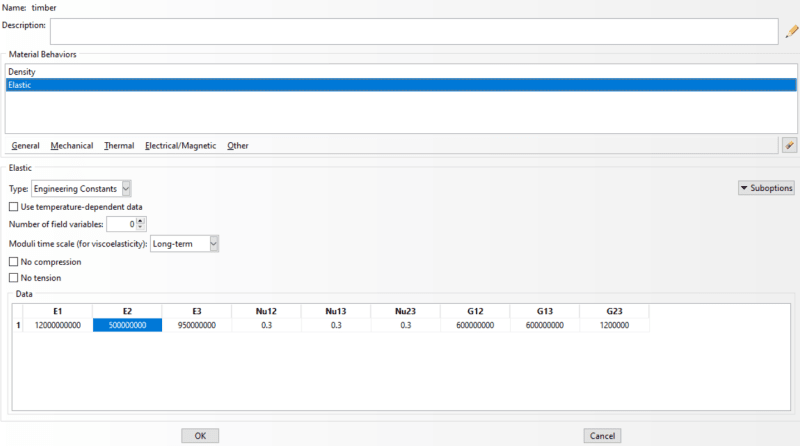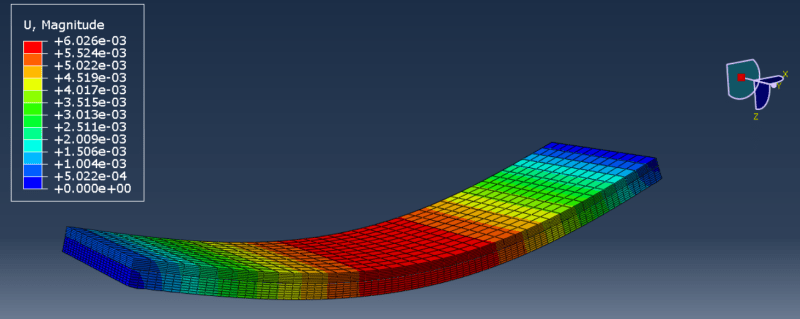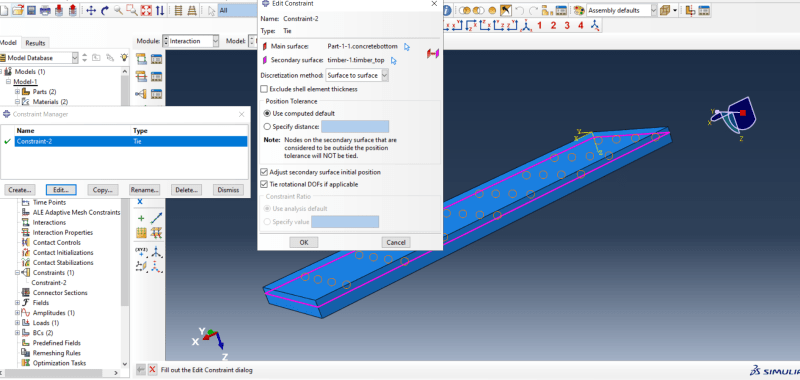I have modelled a composite floor slab of 200 mm timber with 120 mm concrete on top (also called a TCC). I am trying to verify the deflection given by Abaqus with the analytical solution given by the "gamma method". My problem is i can not get close enough results. My Abaqus result show a midspan deflection of 6 mm while the gamma method shows a deflection of 3.3 mm. Any guidance will be very appreciated!
I first want to study 100% composite action. In the gamma method i use gamma equals to 1 and in Abaqus i set the connection between the concrete and timber surface to "tie".
Dimensions:
Concrete: 8x2.4x0.12 m
Timber: 8x2.4x0.2 m
Material data:
Concrete
E-modulus: 33 Gpa
Poisson: 0.2
Timber
E1: 12GPa
E2: 0.5 GPa
E3 0.9 GPa
Nu: 0.3
G12: 600 MPa
G13: 600 MPa
G23: 60 MPa
Load and BC:
Load: 3500 N/m2
BC: Pinned in one end and locked in Z in one end (simply supported).



I first want to study 100% composite action. In the gamma method i use gamma equals to 1 and in Abaqus i set the connection between the concrete and timber surface to "tie".
Dimensions:
Concrete: 8x2.4x0.12 m
Timber: 8x2.4x0.2 m
Material data:
Concrete
E-modulus: 33 Gpa
Poisson: 0.2
Timber
E1: 12GPa
E2: 0.5 GPa
E3 0.9 GPa
Nu: 0.3
G12: 600 MPa
G13: 600 MPa
G23: 60 MPa
Load and BC:
Load: 3500 N/m2
BC: Pinned in one end and locked in Z in one end (simply supported).



